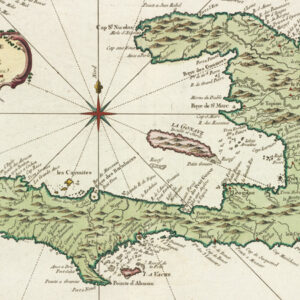
How American Textbooks Misrepresent the Collective Struggle for Racial Justice
On the Colonialism of Contemporary Education
Most U.S. history textbooks, when they do mention civil rights activists, paint them as peace-seeking citizens acting in isolation. Rosa Parks was not a moderate or an accommodationist, but rather a radical feminist who had studied at the Highlander Folk School. History textbooks call her the mother of the civil rights movement, but this quite simply is false. The Montgomery bus boycott, which is misattributed to Parks’s single defiant act of sitting in the front of the bus, was preceded by months of study by many collectives. This study was connected to what people learned from centers like the Highlander Folk School, where education rights activist Septima Poinsette Clark taught after her contract was not renewed because of her activism in support of Black teachers and principals in South Carolina.
For all the references to Martin Luther King in textbooks and politicians’ speeches, rarely is it stated that the famous 1963 March on Washington was for jobs, not racial unity. Singling out tidied-up histories of individuals facilitates the erasure of entire, multi-pronged study and struggle efforts, erasing the names, groups, work, and legacies of civil rights champions such as Bayard Rustin, Diane Nash, and Claudette Colvin. Study and struggle are historically linked to, and specific struggles are the result of rigorous thinking and planning, just as the nation’s power structure and its relations among settlers, Native, Black, and migrant peoples were intentionally built and purposefully maintained. Struggles for social transformation and their accompanying study are often found beyond the walls of formal higher education.
Some notable exceptions to study that reckons with the reality of settler colonialism do exist. Ruth Simmons, the first African American president of an Ivy League institution, publicly acknowledged the foundation of enslaved Black labor that literally built the campus, and created a forum for the study of this history. To this day, new students at Brown University can take a tour of the campus that focuses on the harms committed by the institution. Referencing Simmons’s initial gathering at Brown University, the Radcliffe Institute at Harvard hosted a similar gathering featuring keynote speaker Ta-Nehisi Coates among many other renowned historians. Coates, a National Book Award winner and later recipient of the MacArthur “Genius” Fellowship, spoke to the ways that universities have engaged in ongoing plunder of Black people and communities. These events, in and of themselves, are not transformative. They are interruptions to Eurocentric curricula, but perhaps more importantly, they leave an imprint, however temporary, that higher education must contend with its role in settler colonialism.
Freeman Hrabowski and his leadership in higher education took a different tactic than that taken by the large, high-profile gatherings. He chose to reverse the culture of individualism to one of collective success. This leadership is another example of a person in a position of power in higher education whose work for equity was concerned less about reputation and more about collective wellness. Hrabowski, a former Freedom Rider who learned from the practices of SNCC, shifted the purpose and culture of a higher education institution, and later in his life served as the president of the University of Maryland, Baltimore County. In that leadership role, informed by the collective resistance centered on the struggle to study in the 1960s, Hrabowski prioritized Black student achievement in math and science through collaboration rather than competition.
Singling out tidied-up histories of individuals facilitates the erasure of entire, multi-pronged study and struggle efforts, erasing the names, groups, work, and legacies of civil rights champions such as Bayard Rustin, Diane Nash, and Claudette Colvin.
Symbols are a powerful force because they provide us with a tidy narrative of fairness and justice. I think of how professional football player Colin Kaepernick first knelt during the playing of the national anthem before a preseason game in 2016 as a silent and profound statement about the long-standing divide between the word of the nation and its ongoing violence on Black peoples. The explosion of vitriol against Kaepernick’s practice of kneeling should tell us some- thing about the attachment we have to specific fictions and their politics. Fans’ investment in white supremacy must have been profound if they rejected a player who had achieved so much for his team. Kaepernick’s contract was severed. Some four years after his contract was severed, Kaepernick clarified, again, “I am not going to stand up to show pride in a flag for a country that oppresses Black people and people of color. To me, this is bigger than football and it would be selfish on my part to look the other way. There are bodies in the street and people getting paid leave and getting away with murder.”
This talented athlete and student of Black history and culture made it clear that he was kneeling not to disrespect the nation but to symbolically make apparent that under one of the nation’s most powerful arms, law enforcement, Black people and people of color were being killed. One of the most frequent, and relatively docile, critiques of Kaepernick’s silent protest is that he was being unpatriotic and that the national anthem was “not the right time” to kneel as a political statement. I wonder if, in fact, we have a widely shared comprehension of what the word “political” means. For US citizens whose souls are stirred by the sound of the national anthem and the images of military personnel in formal attire, are they also similarly moved by China’s anthem? My provocation here is that simply because a statement, song, or action is familiar to us, that familiarity does not make it apolitical. On the contrary, it has been made to be memorized and known so that the political narrative of this nation is refreshed each time it is sung in stunning fashion and accompanied by thousands in stadiums and watching at home.
In fact, throughout our daily lives, political symbols and actions surround us and are made more obvious if we can recognize them as purposefully politicized. Consider the slightly less subtle but perhaps even more dangerous erasures of Indigeneity that occur all around us. How many visitors to New York City stroll along Broadway without knowing that the pathway was originally marked and used by the Lenape peoples to tend, be in relation with, and steward that part of Turtle Island, long before European settlers arrived and drew imaginary borders to mark the settler nations of Canada and the United States? As I sit in my office at the University of Pittsburgh, a school with strong school pride, I wonder how many of our students, staff, and faculty know that one of the university’s main thoroughfares, Bouquet Street, is named for Colonel Henry Bouquet, who oversaw the distribution of blankets infected with smallpox to Indigenous peoples in the 1760s. This act was without a doubt an act of chemical warfare.
Just one block north of the University of Pittsburgh’s Oakland campus, Neville and Craig streets were named in honor of the wealthiest owners of enslaved people in western Pennsylvania at the turn of the 1800s. To name these realities and the ongoing erasure of stolen labor and stolen land should cause ruptures in the feelings of school pride, municipal identity, and patriotism that many feel. Again, poet Nikki Giovanni’s words are grounding: that if we wait for a “good” time to tell the truth, we will never do it. It is always the right time.
Decolonial scholar La Paperson, in his book A Third University Is Possible, brings forward the theorizing of Ngũgĩ wa Thiong’o, who proposes that the decolonial already resides within the colonial; that these contradictions abound and are part of the wind and force of ongoing colonization. La Paperson cautions against a tendency to overdetermine colonization in all moments and actions. The examined relationship between study and struggle speaks to the need to not overdetermine colonial education’s hold on study. Neither should we romanticize and overdetermine the impact—or more pessimistically, the futility—of struggle. Struggle, flight, fugitivity, and even within-school success can be and have been acts of decolonial resistance.
_________________________________

Excerpted from No Study Without Struggle: Confronting Settler Colonialism in Higher Education by Leigh Patel (Beacon Press, 2021). Reprinted with permission from Beacon Press.
Leigh Patel
Dr. Leigh Patel is an interdisciplinary researcher, educator, writer, and is the Associate Dean for Equity and Justice in Education at the University of Pittsburgh. She works extensively with societally marginalized youth and teacher activists. Patel is a recipient of the June Jordan Award for scholarly leadership and poetic bravery in social critique and is a national board member of Education for Liberation, a long-standing organization dedicated to transformative education for and by youth of color. She is the author of Youth Held at the Border and Decolonizing Educational Research. Connect with her on Twitter at @lipatel.



















